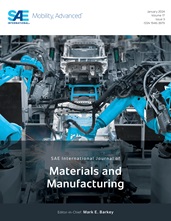Conventional fusion joining techniques pervasive in the automotive industry are unable to effectively join aluminum and steel. To solve this problem, a technique termed friction element welding (FEW) has been developed, which is able to join any nonferrous top sheet material to a base steel layer, independent of the base layer strength. FEW works on the same principles as friction welding, as a steel element is pushed and rotated against a nonferrous top sheet to create frictional energy which softens and flows the material around the fastener shaft and under the fastener head, exposing the steel below. The element then contacts the steel and bonds through traditional friction welding. FEW is a four-step process (penetration, cleaning, welding, compression), with two to four parameters (endload, spindle speed, displacement transition, time transition) controlling each step. This research examines the parameter sensitivity of the FEW process in the cleaning, welding, and compression steps with an emphasis on reducing process time while maintaining joint strength. Joint strength is evaluated through transverse shear, cross tension, and fatigue transverse shear. It is found that process time can be reduced by up to 39% with only a nominal reduction in strength. Dominant parameters are identified for controlling peak torque, process time, and joint strength.
